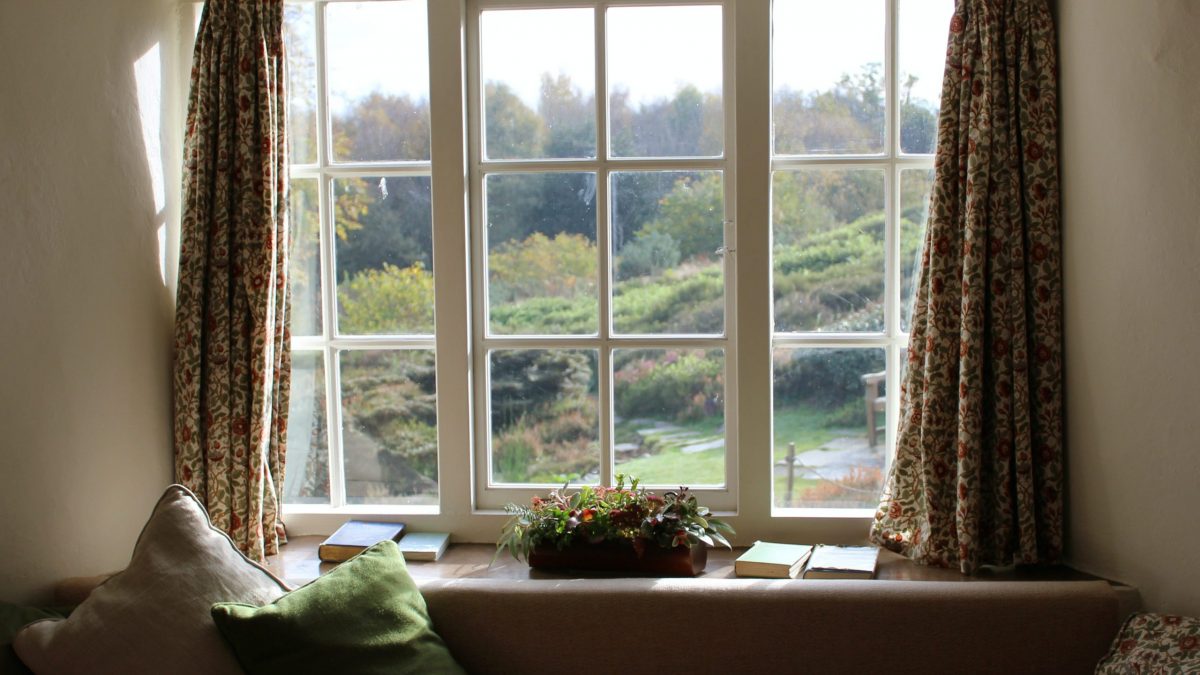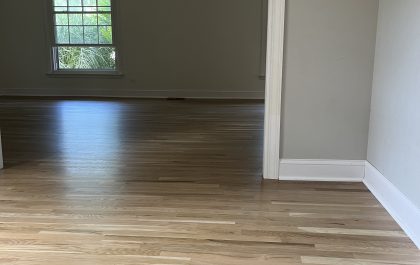When I first began pursuing minimalism about a year and a half ago, I distinctly remember a time when I had returned from the grocery store to a solid surprise. I’d only been out less than an hour while my husband watched our two daughters, but upon walking through the door, it appeared that the activity of choice had been taking every toy, every blanket, and every throw pillow and strewing them across the living room floor.
In not so graceful terms, it looked like a tornado had hit our house. And those left in its wake had some explaining to do.
Thankfully, I had already been in the process of decluttering, so the clean up didn’t take too long. The thing that got me though was how could my husband stand being in a home that was quickly unraveling from peaceful to chaotic?
Didn’t he notice his stress levels rising in an overly cluttered environment?
So I asked him: he admitted that he was barely phased by being in a cluttered, messy place. He was just as relaxed when I left as when I came home.
Mind. Blown.
See for me – and the majority of women – this isn’t the case. Women, studies show, are more affected (physically, mentally, emotionally) by their environment than men.
A 2012 study done at UCLA’s Center on Everyday Lives and Families (CELF) discovered that managing a large amount of possessions was linked to increased levels of cortisol (stress hormone) in women.
During video tours of their homes with researchers, mothers described cluttered spaces as “not fun” and “very chaotic.”
Fathers, in separate home tours through the same cluttered space, often made no mention whatsoever of the messiness and were reportedly unaffected psychologically.
Researchers concluded that women in the study associated a tidy home with a content and successful family.
For men, artifacts around a home were more commonly viewed as a source of pleasure or pride, not stress. For women, the more clutter that piled up in a home, the more anxious they felt.
How could this be? I wondered. While many of the men in my family, like those in the UCLA study, have a seemingly high tolerance for clutter, I’d also heard of many men who do not. So I read on.
A 2010 study by Dr. Darby Saxbe found that in couples who live in cluttered spaces, women have higher cortisol levels both during the day and night (when levels normally drop). Men, the study showed, also had elevated levels of cortisol if they did housework in the cluttered environment.
For men, artifacts around a home were more commonly viewed as a source of pleasure or pride, not stress. For women, the more clutter that piled up in a home, the more anxious they felt.
Saxbe concluded that the person most responsible for navigating the clutter, unsurprisingly, tends to be the one who is the most stressed out by it.
“Clutter is in the eye of the beholder,” he said. “The people who talked about (the clutter) were the ones who had the cortisol response.”
So what can you do if you’re the one talking about clutter, but your loved ones are not? What if you value a decluttered space (for your overall well-being and peace of mind) but your loved ones don’t seem to “get it?”
Here are 3 action steps to help get your loved ones “on board” with decluttering.
1. Delegate more household responsibilities.
The more ownership and investment a person (husband, wife, older child) has in a space, the more he/ she will care about its condition. If you are primarily in charge of maintaining the home, your loved ones will become accustomed to that and begin to expect it of you.
Begin delegating small tasks to those around you. When loved ones realize how long a certain task takes (like picking up toys or doing dishes), then they will likely be more open to owning fewer possessions in that area so to cut down on work time.
Remember, the person who is responsible for navigating the clutter is the one who gets the most stressed about it. Let your loved ones do some clutter-navigating so that they begin to feel the need for change.
2. Model the benefits of living with less by decluttering your own possessions first.
Begin decluttering by focusing on what you can control – your own stuff. So often we see the clutter of those we live with as the problem. And while it certainly may be problematic, there’s a good chance that your own stuff is too.
Start by minimizing your own possessions – your wardrobe, your kitchen items, your sentimental items, and even your toiletries.
As you declutter your own items, clear spaces will emerge around the home. You will begin to feel lighter, your mood will improve, and you’ll have more free time on your hands. As your loved ones see your model, they will begin to notice the benefits living with less brings.
Neuroscience also says that we often become like those we spend the most time with, thanks to mirror neurons in the brain. Our actions and improved emotional state can be contagious on a physiological level. In time, if we stay consistent with decluttering, our loved ones will likely begin imitating some of our actions and become more open to living with less.
3. Talk to your loved ones about clutter.
Start the conversation about clutter and its effect on you. But be mindful about when and how you say things. The best time to talk about clutter is not when you’re feeling super stressed by it. Instead choose a time when you’re calm and have your loved ones’ full attention. Mention facts from an interesting study on clutter and well-being (such as the UCLA study above or this one from Princeton).
Observe your loved ones’ response and give them the freedom to respond any way they choose. A few days later, make another emotionally neutral, clutter-related comment. Maybe you mention how much more relaxed you feel in an orderly home. Keep the comments positive and consistent.
Although it won’t happen overnight, your loved ones will begin to realize how important maintaining an uncluttered space is to you. To truly love someone is to “want them well.” In this case, that means they will begin to respect your need to declutter and, eventually, uphold your new way of maintaining your home.
Even though my husband continues to be less affected by clutter in the home than I do, he does now fully support our minimalist lifestyle. Following these three steps the past year has shown him the benefits of minimalism. He’s gone from making skeptical comments to occasionally sending me links to tiny homes and RVs!
If you’re motivated to declutter, but your loved ones are not, don’t lose hope! Your success will be determined by your mindset – by choosing to focus on what you can do.
Take time to brainstorm what you can do. Write it out. Post it up. Let this list be a reminder that you can begin to take steps toward simplicity in your home regardless of your home’s current status or of your loved ones’ current stance on clutter.
Keep the big picture in mind, stay consistent, and slowly but surely the benefits of living with less will speak for themselves.
This article originally appeared on the author’s blog, www.richinwhatmatters.com
Julia Ubbenga
Related posts
Recent Posts
Flooring Renovation: Asbestos Removal and Choosing the Perfect Floor Stain
We finally completed the renovation of our first-floor flooring, and like most renovations, it was a bit more involved than we initially hoped for. When we bought the house three years ago, we knew the…
Roses are red: 8 beautiful shades of a paint color you might not realize you love
Lots of us love blues, greens, whites, and greys. And if neutrals are more your thing, you might think you need to stay far away from a color like red. But we think it’s worth…





